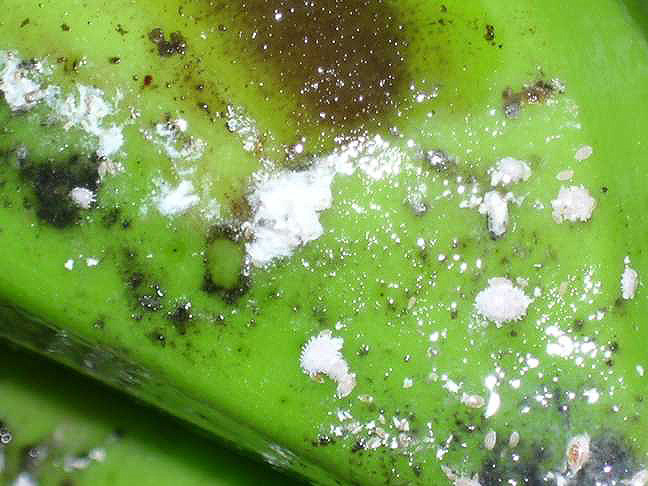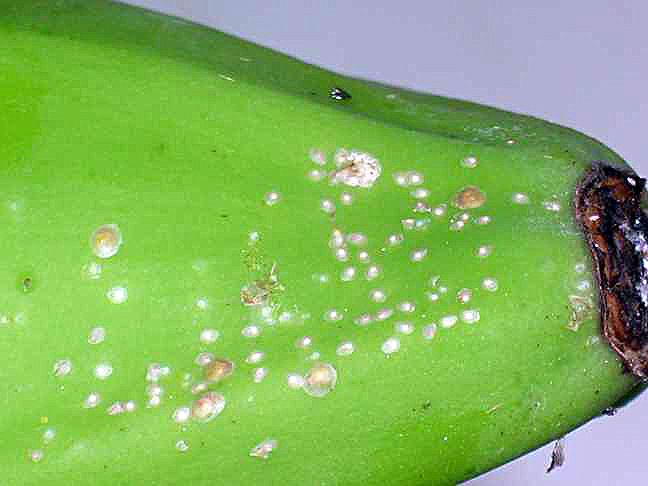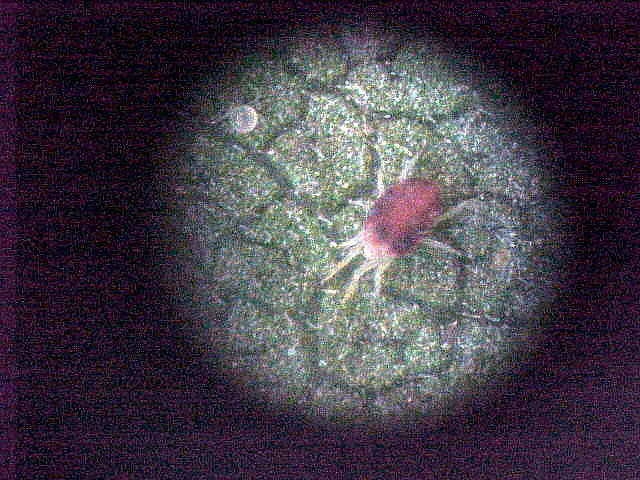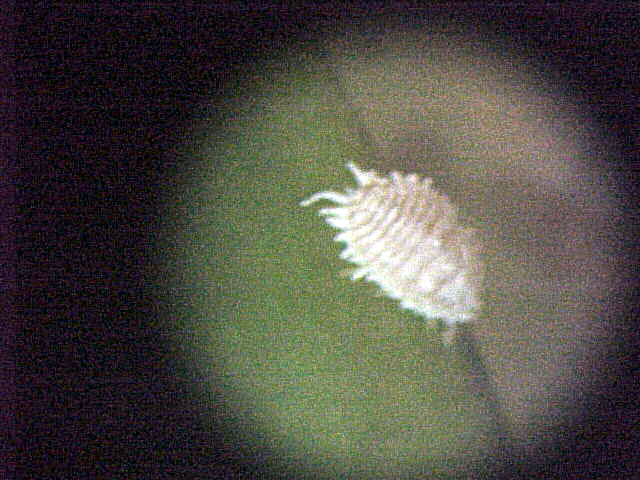Crops > Plantation crops > Banana > Insects > Pests, Philippines
Crops Plantation crops BananaInsects Pests, Philippines
|
Banana pests, Philippines
|
|
|
 |
 |
 |
 |
|
June 2006 Banana pests from Philippines
Biosecurity Australia sent members examples of banana pests, said to be from the Philippines. Notes on the samples were provided as follows:
• The red mites were collected from an adjacent papaya plantation and frequently found in bananas, possibly Dolichotetranychus floridanus.
• The two-spotted mites (Tetranychus urticae).
• The mealybug colonies are either Dysmicoccus brevipes or D neobrevipes.
• The scales are armoured scale in the Diaspididae family and almost certainly belong to the subfamily Aspidiotinae.
Members thought that the scale was probably Aspidiotus destructor; agreed about the Dysmicoccus, but were unable to decide on the species from photographs, and that the spider mites needed to be slide-mounted to be sure of identification.
|
|
|
